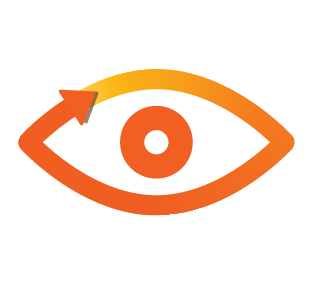Are organisations using technology ethically to help keep us safe and well, or is it a covert way to keep tabs on us now we’re not all in the office?
Opinions will vary depending on who the organisation is, what the tech is and to what extent do the employees know about it. Either way, it’s obvious that this could seriously impact the employee/employer relationship. What do you need to know before bringing new tech into your organisation?
In the recent CIPD podcast they covered their latest report on ‘Workplace technology: the employee experience’, you can download the full 28 page report from their website or listen to the 30 min podcast – or read the summary below:
The COVID-19 pandemic has changed the landscape of how many of us work, certainly for office/desk-based workers. You may have seen the meme that joked it wasn’t the CEO or CTO that led the digital transformation of your company – it was COVID-19. Many of us laughed at that, knowing it was true. Back in March there was a focus on technology to ensure immediate flexible and remote working. Now, 6 months later, we’re looking at it thinking more about productivity, employee engagement, wellbeing, and balance.
Wellbeing and work–life balance
- 29% employees say that use of portable devices blurs boundaries between work and home life
This is completely understandable as some don’t have a dedicated office to work from. For many, the dining room table has taken on a new role.
- 30% say that their use of portable devices makes it difficult to switch off from work
Has your organisation provided employees with laptops and mobile phones or are you expecting them to login using personal devices? Previously, you may not have had access to email after 5pm but now your phone is pinging at 8pm.
- Around a quarter of employees say their work has had a negative impact on either their physical (24%) or mental health (26%)
Are you using tech to find out how your employees are feeling and what they might need from the organisation to alleviate some of this impact? Should you be promoting your Employee Assistance Programme, so employees know what support they already have access to?
Monitoring and surveillance
- 45% of employees believe that monitoring is currently taking place in their workplace
Even pre COVID-19, this was already in place. We have security badges that allow us access to the building/provide data about what time we started and finished. Perhaps the question here is around what it’s monitoring and why.
- 86% believe that workplace monitoring and surveillance will increase in the future
It would be interesting to know more about why this is. Is it due to the assumption remote working isn’t going away and that there is a need for it because we’re no longer under the scrutiny an office allows? Are we suspicious that employers will take that route to identify who that want to keep in hard times, or as we head towards a more automated world? Do you know how your workforce would answer this question?
- 73% of employees feel that introducing workplace monitoring would damage trust between workers and their employers
The key here is what’s the purpose? What’s the objective? How is the monitoring solving that and how much of it do the employees understand? They may not agree with the method, but at the very least, they can understand why.
Employee voice
- Only 35% of employees and/or their representatives have been consulted on the introduction and/or implementation of new technology
You should discuss the objectives and listen to their suggestions from the start – don’t fear doing this. Though it might mean more upfront work for you, it will foster trust and build relationships. It will also save you (or at least reduce) pain on the other side. Build it into your comms plan.
- Where employees have not been consulted about technology change, only 20% are positive about the likely impact on their job quality, compared with 70% for those who have been consulted
You want to be in the 70% who are positive about the likely out-comes but you can only do this via clear communication and consultation with the employees. In order to achieve your objectives, you need employees to be advocates and they can’t do that without understanding.
You don’t want to be inundated with questions and suffer the unintended consequence of employees wasting time looking for ways to outsmart the system, which they will. That’s not conducive to solving your initial objective.
You should also note that there was evidence that those in lower-skilled roles are less likely to speak out, their roles are precarious and they don’t want to jeopardise their income – if applicable, this is for you to be aware of and carefully navigate.
In summary…
This is another prime opportunity for HR, the Communication and IT teams to collaborate. It’s imperative that all three perspectives are heard when making strategic and operational decisions around new, or evolving, technologies for the workforce. That should be both in terms of the tech type and how it’s implemented. A 2018 CIPD report found that HR was the least engaged/consulted in the design and implementation. The CTO won’t necessarily have the people agenda at the top of their list of considerations so it’s for us to seize the opportunity and share our expertise.
The HR, Communication and IT teams should work together to ensure that there are policies in place that make clear the following:
- Purpose
- Outcomes
- Boundaries
Ultimately, People Professionals need to know what the purpose and objective is. They need to be part of that conversation and ask if using tech is the best way of solving it. If there is an issue with low engagement and productivity, software that monitors keystrokes or how often employees move their mouse isn’t going to help.


